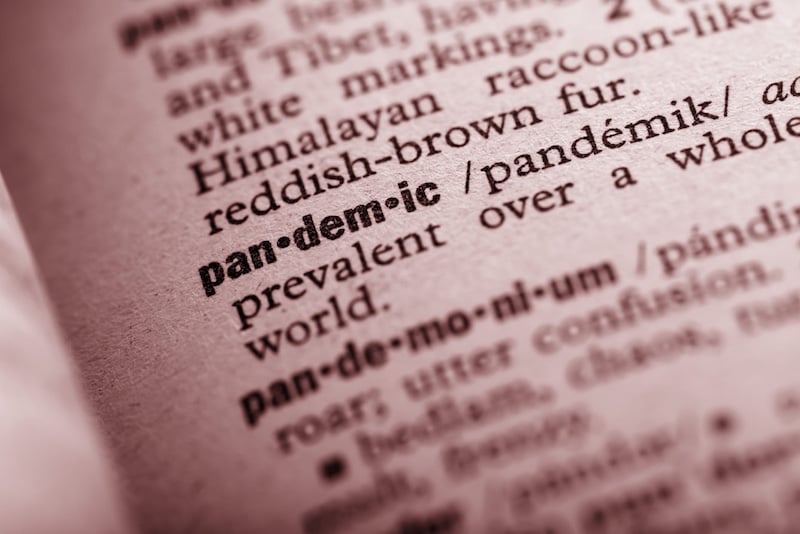Summary:
Amid rising cases of measles, H5N1, and Mpox clade 1, experts warn that the combination of weakened public health infrastructure and anti-science sentiment could pave the way for a pandemic redux.
Key Takeaways:
- Public Health Vulnerability: The erosion of public health systems and growing misinformation could lead to undetected pathogen spread and hospital surges.
- Preventive Measures Available: Effective tests and treatments exist for these pathogens, and clinical laboratories play a critical role in preparedness and response.
- Call to Action: Raising awareness and advocating for public health measures is essential to prevent a repeat of the worst aspects of the COVID-19 pandemic.
With measles, mpox, and H5N1 posing a threat, should we worry that we could be hit with a tridemic? History says, yes.
By Chris Wolski
Measles. H5N1. Mpox clade 1. Five years on from the declaration of COVID-19 as a worldwide pandemic, are we headed for a pandemic redux?
I might just have a post-traumatic pandemic mindset, but with the above-mentioned infections seemingly boiling over, it seems highly possible that we could be headed to a new infectious health crisis, a tri-pandemic, that could be just as bad or worse than what we faced in 2020.
The Double Pandemic Model
A double pandemic is not out of the question. While the so-called Spanish flu is certainly well-known and documented, less well-known is the other infection that haunted 1918, encephalitis lethargica, which killed about 1 million people worldwide over a decade-long period before simply disappearing (I highly recommend Molly Caldwell Crosby’s Asleep: The Forgotten Epidemic That Became Medicine’s Greatest Mystery to learn more).
Pandemic Redux: The What If
And while there have been few deaths from these three infectious diseases—I caution falling into statistical complacency in a sort of inversion of Josef Stalin’s famous (though likely apocryphal) dictum about tragedies vs. statistics—the virulent anti-science mentality of our current leadership is one of the biggest variables that could lead us down a road to a pandemic redux.
Am I being overly dramatic? Perhaps. So, I decided to ask an expert his opinion about the potential for a one-two-three punch from these emerging bugs.
Rodney Rohde, SV, SM, MB (ASCP), FACSc, Regents’ professor, associate director or the Translational Health Research Center, and chair of the medical laboratory science program in the College of Health Professions of Texas State University painted the following picture: “If we’re heading into a ‘pandemic redux,’ especially with the erosion of public health infrastructure and growing anti-science sentiment, the consequences could be severe. If we don’t commit to public health and medical laboratory testing [healthcare/hospitals], then we risk undetected spread of novel or reemerging pathogens, lower immunity and higher hospitalizations, and misinformation taking over. If COVID, flu, RSV, and now even measles surge simultaneously or even back-to-back then we risk hospital surges [overload], supply chain disruptions, which will impact antivirals, vaccines, and even basic medical supplies like PPE seen during COVID, workforce and economic impacts because mass illness leads to productivity losses, and more pathogen mutations, which will lead to more surprises in what to expect within the walls of healthcare. I fear we are basically likely to see setting ourselves up for a repeat of the worst parts of the pandemic—just without the political or public will to respond effectively. The biggest risk is complacency—by the time leaders act, it may already be too late.”
It gives me no pleasure or satisfaction that my concerns are well-founded.
Can we Stop a Pandemic Redux?
So, what we do? The good news is that all these emerging pathogens have well-established and effective tests and even treatments. Clinical laboratories can lead the way—stockpile supplies, make sure the tests are available to their hospitals or physician or pharmacy clients. But most of all: You can raise the alarm in a measured, factual way about the dangers both short- and long-term of these diseases to anyone who will listen.
Now is not the time to be silent—our health and our lives depend on it.
Chris Wolski is chief editor of CLP.
Featured Image: Jason Kolenda | Dreamstime.com




